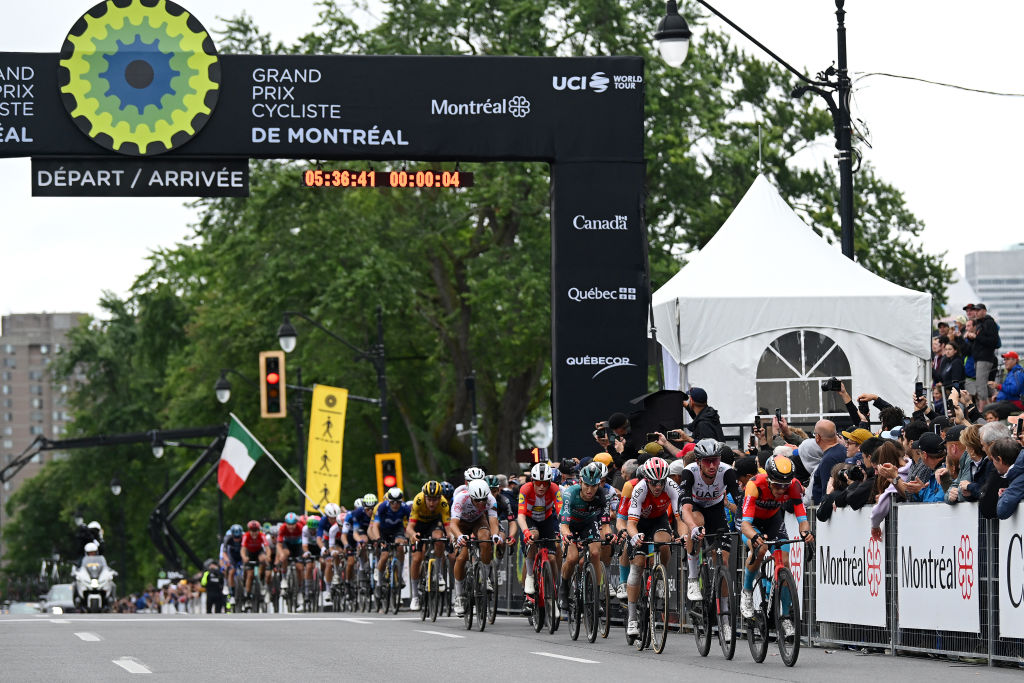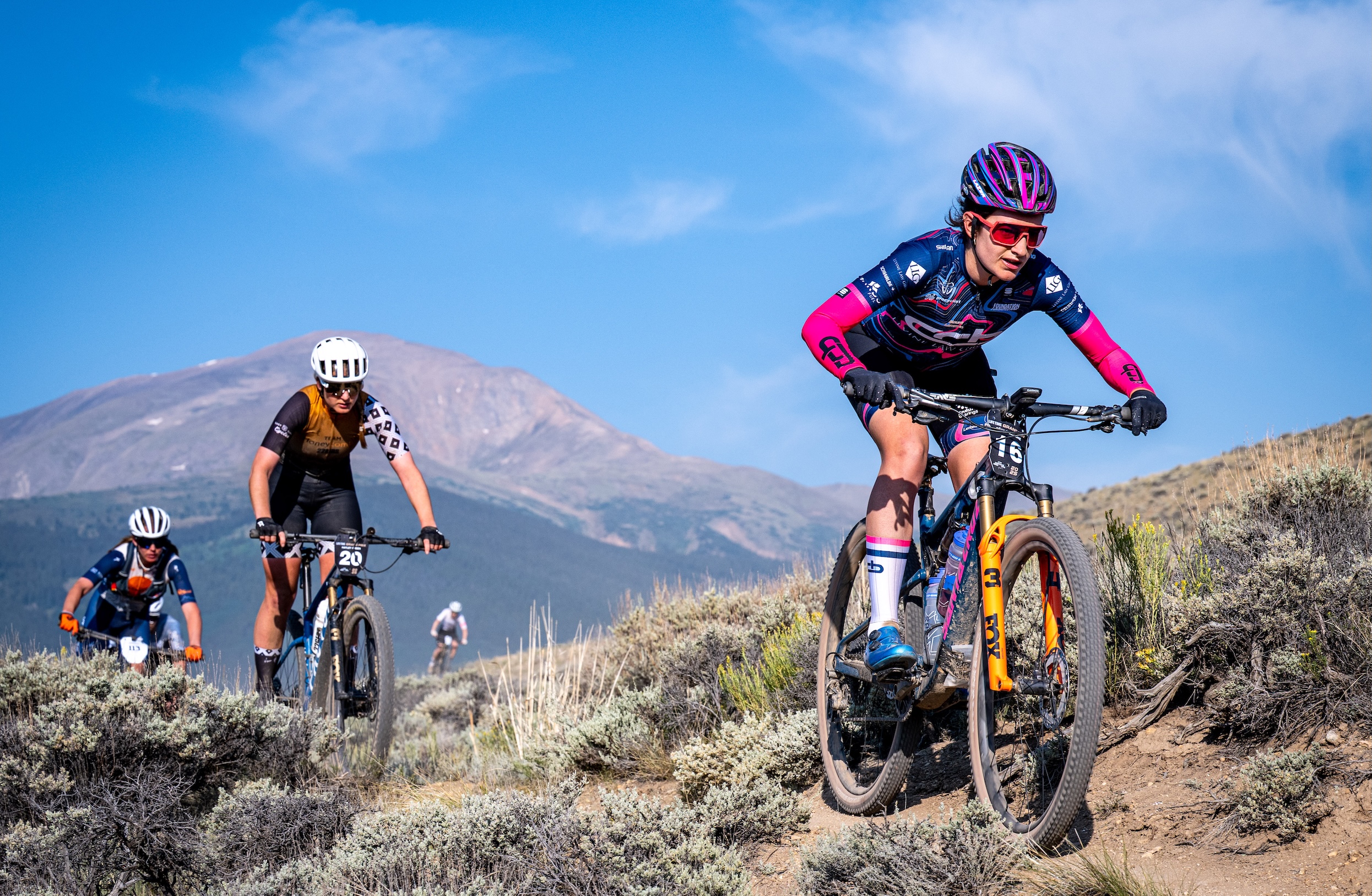'You already have your course!' – Montréal 2026 World Championships taking shape
Formal countdown to event begins at GP de Montréal

When Mondiaux Montréal 2026 president Sébastien Arsenault ran into Bernard Hinault earlier this year, he couldn't help but seek his counsel on how to put together the Road World Championships course.
As ever, Le Blaireau's answer was frank and to the point: "You already have your course!"
The full details have yet to be ironed out with the local authorities and signed off by the UCI, but it seems increasingly likely that the route of the 2026 Worlds in Montréal will bear more than a passing resemblance to that of the Grand Prix Cycliste de Montréal.
Then again, how could it be any other way? The circuit through the Parc du Mont-Royal has a cycling heritage like few others outside the sport's traditional heartland.
There was a firm reminder of that during this weekend's early presentation of the 2026 World Championships in Montréal, when Eddy Merckx spoke via video message, recalling his triumph in the Parc du Mont-Royal in 1974, which was the first time the World Championships took place outside of Europe.
At the time, despite the tradition and enthusiasm in outposts such as Colombia, the top level of the sport was effectively a closed shop, the preserve of a few countries in Western Europe. Those 1974 Worlds marked the formal beginning of cycling's attempts at mondialisation.
That Canadian expedition was a novelty, but the extreme difficulties of the course meant there was nothing unfamiliar about the world champion it produced. On a day with more than 5,000 metres of total climbing, Merckx notched up his third rainbow jersey after outlasting Raymond Poulidor in the sprint, while Geneviève Gambillon of France claimed the women's event.
The latest race content, interviews, features, reviews and expert buying guides, direct to your inbox!
The striking circuit through the Parc du Mont-Royal, with repeated ascents of the Côte Camilien-Houde, was immediately established as something of a classic. It featured again two years later when Montréal hosted the 1976 Olympic Games, and a version of it was used between 1988 and 1992, when the Grand Prix des Amériques attracted top European professionals back across the Atlantic.
When Serge Arsenault rebooted that event in 2010 with the Grand Prix Cyclistes de Québec et de Montréal, the Parc du Mont-Royal were always going to be the beating heart of the second leg of the double-header. And, although full details of the route won't be confirmed until the UCI inspectors have given their formal imprimatur, it will clearly feature heavily in 2026 too. The only question is how much.
"When a person like Bernard Hinault tells you that you already have your Worlds, then it's clear that you don't need to change much," Sébastien Arsenault told reporters after a short presentation of the event at the weekend.
"If you speak to riders from that generation, it wouldn't surprise me if they all told you the same thing. They'd say do the Worlds entirely on the GP de Montréal circuit. The Worlds will be 270km long instead of 220km, so there'll be riders all over the place and you'll end up with a great champion. It will be bordel and a great winner."
'The important thing is to have a good spectacle'

It would certainly make for a most demanding elite men's road race. The GP de Montréal currently entails 18 laps of a 12.3km circuit over the Côte Camillien-Houde (1.8km at 8%), the Côte Polytechnique (780m at 6%), Panguelo (600m at 7%) and the Avenue du Parc (560m at 4%).
It adds up to a total of 4,842m of climbing across 221.4km. Adding four laps to bring the race up to Worlds distance would also push the total climbing to some 5,918m. For reference, the tough Innsbruck 2018 course ultimately featured less than 5,000m of climbing.
Although the existing circuit is a little shorter than the UCI Technical Guide would recommend, that is unlikely to prove an obstacle. The circuit used at the GP de Montréal seems likely to undergo minor tweaks for the main event rather than extensive surgery.
"The UCI are very open, the important thing is to have a good spectacle," Arsenault said. "But we will make some small adaptations."
And, despite Hinault's advice, Arsenault does not rule out the idea of incorporating a point-to-point opening section for the elite races before the riders tackle the finishing circuit an element introduced to the Worlds in Geelong in 2010 and often mimicked since.
Given the backing from the city authorities, it is certain that all events will start and finish in Montréal itself, but Arsenault floated the possibility of routing the elite road races over the Saint Lawrence to the Rive-Sud before finishing on the Parc du Mont-Royal circuit.
"We're working with the UCI. We have to find a balance. The first part is the sporting side, then we look at what's telegenic and at what's the least disruptive for the city, because we can't shut down the whole town either," said Arsenault, who suggested the time trial course might include the cycling path in Voie Maritime Park.
"It's not decided yet, but we do have the idea of using the cycling path there for the time trials, maybe with the cameras on boats and with the city as a backdrop. We're always looking at everything, like film directors, we're looking at every angle."
One certainty is that the Avenue du Parc, site of the grand finale to the GP de Montréal, will host the finish line for all events at the 2026 Worlds. And, whatever their final configuration, the eventual road races will be demanding physically and complex tactically.
"It's not really a course where there's one particular corner or climb where you need to be in front," Adam Yates said after winning the GP de Montréal on Sunday. "And it's a super hard race. There's never a point where you actually feel good, it's just that you think maybe I could try something."
In other words, it's hard to argue with Bernard Hinault.

Barry Ryan was Head of Features at Cyclingnews. He has covered professional cycling since 2010, reporting from the Tour de France, Giro d’Italia and events from Argentina to Japan. His writing has appeared in The Independent, Procycling and Cycling Plus. He is the author of The Ascent: Sean Kelly, Stephen Roche and the Rise of Irish Cycling’s Golden Generation, published by Gill Books.
